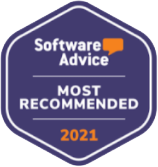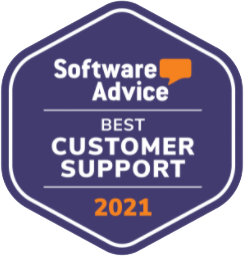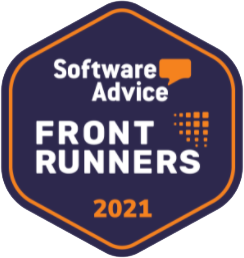In today’s fast-paced business world, it can be easy to get caught up in pursuing profits and growth at all costs. However, an increasing number of successful companies are shifting their focus towards prioritizing their people—whether it is their employees, customers, or the wider community.
You would think this is likely a feel-good trend, but it has been proven that people-focused businesses can reap many tangible benefits. Here’s why it’s crucial to always put people first in business.
Why Businesses Should Put People First
A people-focused business highly values its customers’ and employees’ satisfaction. Companies like these prioritize human interactions and relationships over profits, recognizing that a positive work environment and customer experience are critical to long-term success.
Businesses that take a people-centric approach do this for several reasons. For one, a people-focused company leads to increased employee motivation and satisfaction. Employees are more likely to be productive and committed to their company’s success because they feel cared for and valued.
Putting people first also means customer relationships improve. Businesses prioritizing their customers’ needs create a positive customer experience, leading to repeat business in the long run.
Additionally, a people-focused culture presents a positive impact on the business itself. It’s the right thing to do because when you take care of your employees, they care for the customers. As a result, companies perform better financially and have the power to make a positive impact on society.
What You Need to Build a People-Focused Business
Building a people-focused business requires a deliberate approach. Here are the key elements you need to prioritize a people-centric culture.
A Clear Purpose and Values
In a McKinsey survey, about 82% of organizations stated that purpose is crucial, but only half said that pursuit led to impact. A clear goal aligning with the company’s core values is critical because it guides decision-making. It also shapes the overall direction of the business.
In the workplace, articulating the company’s purpose to stakeholders, investors, customers, and employees is crucial. That way, everyone is working towards the same goals.
Values are equally important when building a people-focused business. They should have a means of treating employees and customers respectfully, fairly, and compassionately. When developing company values to create a people-first culture, businesses should look for opportunities to put them into practice.
Overall, this allows everyone to have a system where you empower your people to participate in self-management. That way, employees put forth their best effort and energy into their productivity.
Strong Leadership
Company leaders are crucial to this aspect because they inspire and motivate employees to strive toward common goals. Therefore, strong leadership is essential for creating a people-first business culture. That’s because leaders can build trust and make tough decisions that prioritize long-term success over short-term profits.
Strong company leadership means leaders must lead by example, modeling the behavior they expect from others — and providing guidance and support to employees. Business leaders often forget these aspects because they focus too much on their overall responsibilities.
In fact, studies show that more responsibility changes the way you think, preventing you from paying attention to how your behavior can affect others. Yet, if you set goals for yourself, you can achieve higher greatness that leads you to make employees feel included.
By creating a culture of trust, respect, and collaboration, strong leaders can inspire workers to be productive and lead the company to ultimate success.
Customer and Employee-Centered Policies
A people-focused culture succeeds when businesses have policies centered around their customers and employees. Such policies should be grounded in all aspects of the company, from hiring practices to customer service.
With a customer-centered approach, companies must prioritize customer needs and satisfaction. They can achieve this by providing personalized attention, creating quality products or services and practicing business ethics. Placing the customer first means businesses build better customer relationships — increasing customer loyalty and positive word-of-mouth advertising.
When creating employee-centered policies, consider focusing on their well-being and growth. These should include fair compensation, development opportunities and a positive workplace environment. In turn, businesses can improve their employees’ satisfaction and retain more workers successfully.
An Example of a People-Focused Business
One example of a people-focused workplace is Patagonia, an outdoor clothing and gear company. Patagonia strongly focuses on sustainability and environmentalism, which is reflected in its business practices and product offerings. However, it is also known for its employee-centric approach.
Patagonia offers its employees a range of benefits and perks, including on-site childcare, paid time off for environmental activism, and flexible work arrangements. It also pays its employees a fair wage and provides them with career growth and development opportunities.
In addition to its employee-focused approach, Patagonia prioritizes its customers’ needs. It offers a lifetime warranty on all its products and encourages customers to repair and reuse their gear instead of buying new products.
Overall, Patagonia’s people-focused approach has helped it build a loyal customer base and a strong reputation for sustainability and social responsibility. By prioritizing its employees and customers, Patagonia has created a positive work environment and a brand that resonates with consumers who value ethical and sustainable business practices.
Creating a Positive Impact Through the Power of People-Focused Businesses
People-focused businesses are more than profit-making machines. They put people first by focusing on the development and well-being of their stakeholders, including employees and customers. By prioritizing people within and outside the organization, you can create a culture that leads to immense growth and success.
Too many businesses are criticized for putting profits before people. However, emphasizing people-first culture can make your company a beacon of hope. You show that it is possible to be successful while making positive changes—and that a business’s greatest asset is its people.
















